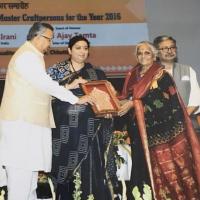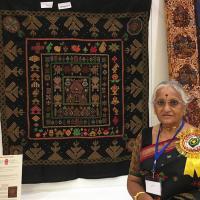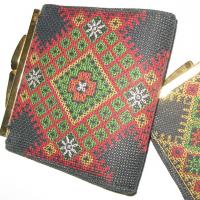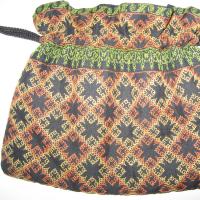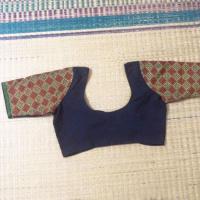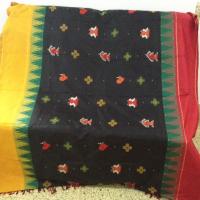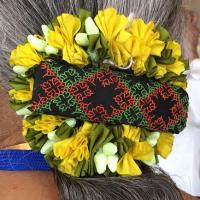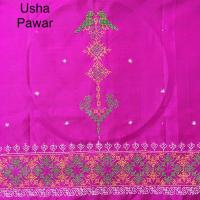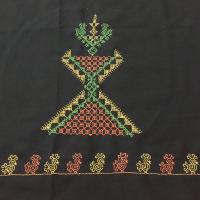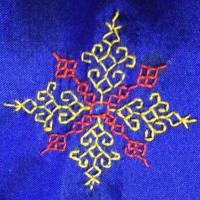Design Gallery
Kasuti Embroidery 1 - Karnataka
Needle Handwork
by
Kasuti word is derived from the Kannada word ‘Kai’ means hand and ‘Suti’ is cotton thread meaning Kasuti is the handwork of cotton thread. Kasuti Embroidery speaks about the tradition, customs and people of Karnataka. This traditional form of folk embroidery is famous in many places, especially in the districts of Bijapur, Dharwar, Belgaum, Miraj, Sangli and Jamkhandi. The artwork depicted in Kasuti Embroidery depends on women’s world. Motifs used in the folk embroidery are from surrounding areas, temple architecture, lotus flowers, chariots, and gopurams of South India. Bird motifs such as parrot, the peacock with spread plumage, the swan and the squirrel are commonly used. The sacred bull, the elephant and the deer are animal motifs used for Kasuti Embroidery.
Many women artists practice varieties of embroidery. Smt. Usha Pawar from Bengaluru mastered the art of embroidery in Kasuti. Her passion for learning new things not only bring her into the limelight but also made a difference in people’s lives. She fell in love with this art when she happened to come across a gorgeous Kasuti saree. Usha learned this art from her teacher Anita Chaudapurkar. In 1990 Mudra Coats held an event which became a turning point in her life. Usha was nominated for National Award in the Anchor embroidery contest in the year 1992.
For more details:
https://www.dsource.in/resource/kasuti-embroidery-karnataka
